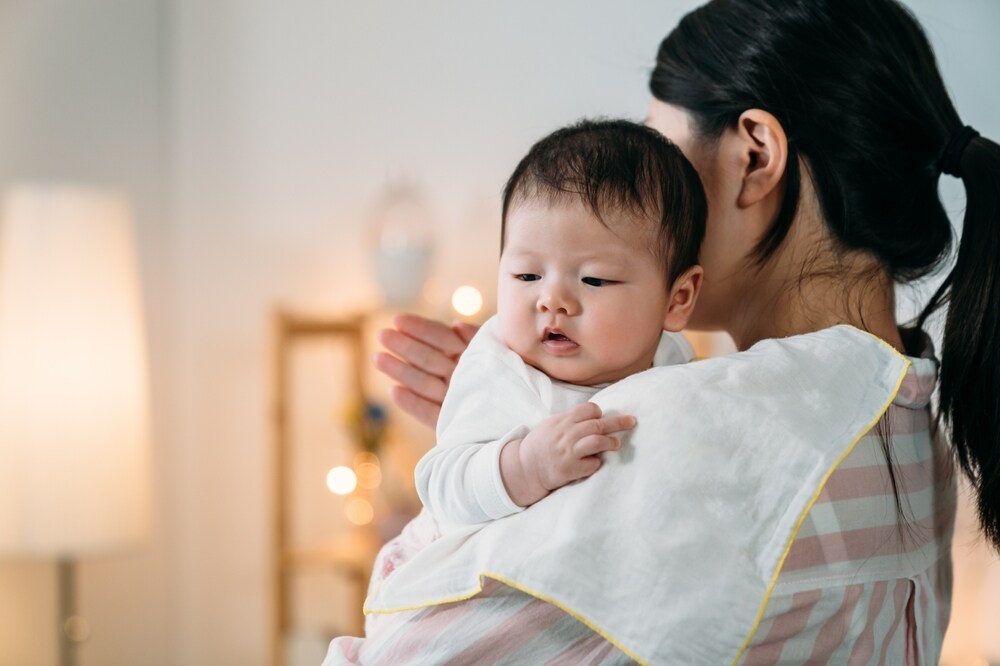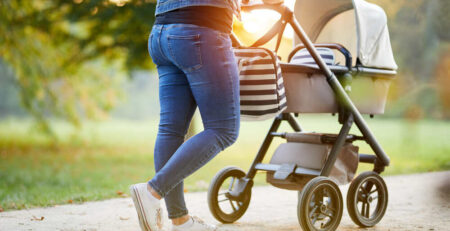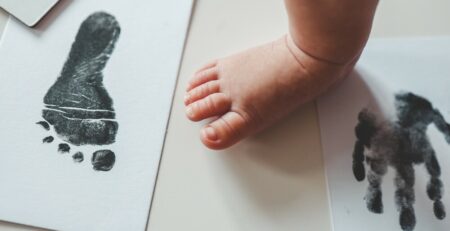Burping Baby 101: Safety, Timing, and Positioning
Bringing a new life into the world is a beautiful journey filled with moments of pure joy and a few sleepless nights. As a new parent, you’re entrusted with the incredible responsibility of caring for your little one’s well-being, and one aspect of that care is often underestimated but holds significant importance – burping your baby.
Burping may seem like a simple task, but it plays an important role in your baby’s comfort and happiness. It also goes deeper than simply getting rid of air bubbles; it’s a chance to foster a deeper bond between you and your little one.
Join us as we cover the basics of burping a baby and answer all your questions about this important task.
How to Burp a Baby: The Basics
First things first, why do babies need to be burped? The answer is simple; babies often swallow air when they feed. Burping helps to get rid of these air bubbles that their little digestive tracks have trouble doing themselves.
Though this seems like a simple action, it goes a long way to ensuring baby is comfortable. As KidsHealth explains, swallowing too much air can make baby spit up, or seem cranky or gassy. When babies take in lots of air when feeding, it also leads to them feeling uncomfortably full faster.
Speaking to Parent magazine, Erika Landau, M.D., a pediatrician in New York City explains that “This happens more often with bottle-fed babies, who tend to eat faster.” However, breastfed babies can also swallow air while nursing, especially if mom has an oversupply of milk or baby eats fast.
How to Properly Burp a Baby
With some practice, it’s easy to get baby to burp! UNICEF Parenting highlights the three most common techniques that many parents use:
- Over the shoulder: Hold baby upright with their head resting on your shoulder while also supporting their bottom. Gently pat their back with your other hand. You can easily do this while sitting down or standing.
- Sitting on your lap: Sit baby on your lap supporting their chin and chest with one hand. Rub or gently pat the back with your other hand.
- Lying across your lap: Lay baby across your knees on their belly, making sure their head is slightly elevated. Then, start rubbing or patting your baby’s back.
Tip: Burping can be a messy business, make sure to use a burping cloth to absorb any spit up!
When you burp a newborn, always make sure to support their head and neck. Keeping their head higher than the rest of their body an an important part of releasing gas and keeping baby comfortable.
Since burping often happens during feeding times, it’s important to find a comfortable position for both you and baby. These breastfeeding positions are ideal for helping baby have a productive feeding session while still making it easy to transition to a burping position as needed.
How Long to Burp a Baby
Coaxing a burp from baby can take a few minutes. If you notice they haven’t burped in a few minutes, try to move your baby to a different burping position. Sometimes a little extra movement is all it takes to release excess gas.
After a while, you will begin to find a burping position that works best for you and baby!
How to Burp a Sleeping Baby
Does your baby fall asleep during feeding time? Luckily, it’s just as easy to burp a sleeping baby as an awake one.
In fact, you can use any of the three burping positions with a sleeping little one. Just take extra caution to ensure baby’s head is being supported. This ensures your baby can sleep comfortably and soundly after a feeding.
How Often to Burp a Baby

There’s no set schedule for how often to burp a baby. A good rule of thumb is to burp baby regularly, both during and after feeding. If you’re nursing, consider burping baby before switching breasts. If bottle feeding, Parents magazine recommends burping between every 2 to 3 ounces for newborns up to about 6 months old.
There is a delicate balance between ensuring baby remains comfortable without disrupting feeding time. You don’t want to be excessive, as this can make feeding time longer and lead to frustration.
Always burp after feeding, even if baby isn’t showing any signs of discomfort. This is good practice to remove excess gas.
Signs Your Baby Needs to Be Burped
While burping should be a regular part of every feeding, sometimes there are clear signs that your little one needs some extra releasing gas. Here are a handful of common signs of discomfort that mean your baby needs to be burped:
- Baby isn’t eating as much during feedings and is cranky
- Baby is bloated or feels full fast
- Babby is colicky during feeding
- Baby spits up during feeding
- Baby chokes or gags on milk
- Baby is gassy or burping
When to Stop Burping Baby
As baby grows and their digestive system matures, they won’t need as much help burping. Though there’s no exact age for this, many parents mark this change around the 6-month mark when baby starts to eat solid foods.
Of course, some babies are gassier than others. If your little one is still showing signs of discomfort after eating, you can use these burping techniques to bring them some comfort at any age.
Celebrate Your Breastfeeding Journey
Burping your baby is more than just a routine task – it’s an essential element of caregiving that contributes to your little one’s comfort and well-being. By mastering the art of burping, you’re not only prioritizing your baby’s health but also strengthening your bond.
Remember that each baby is unique, and what works for one may not work for another. It’s always important to pay attention to your baby’s cues and adapt your burping techniques as needed.
Celebrate your breastfeeding journey and bond with your little one with sentimental breastmilk jewelry from KeepsakeMom. Shop our full collection today!












